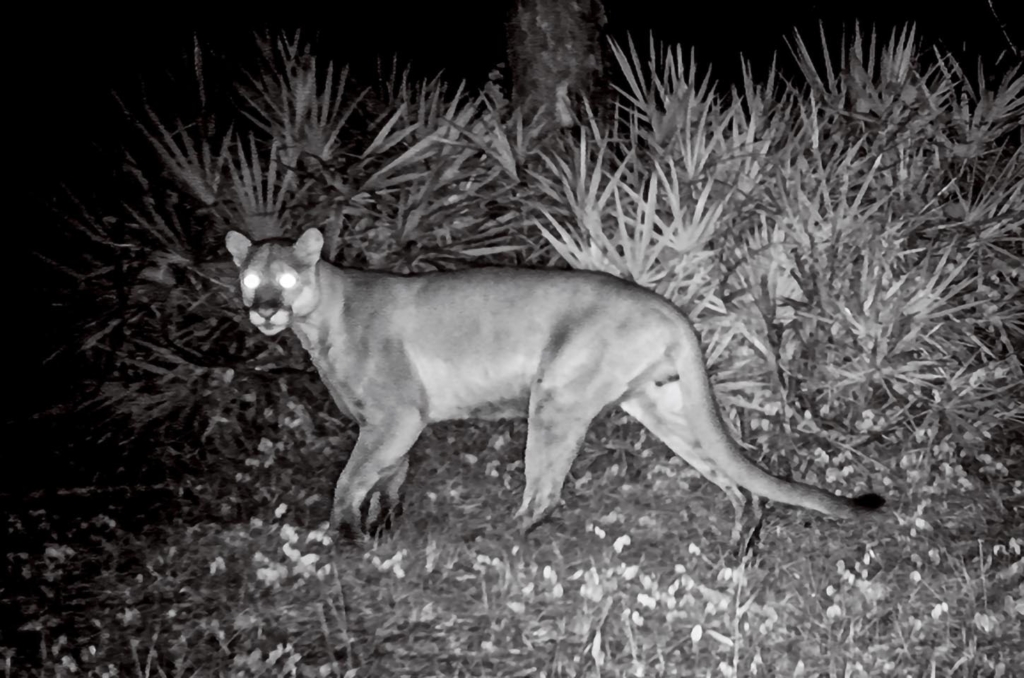Educating audiences through documentaries

Deep in the Everglades, Rich Kern ’66 climbed down from a 50-foot tower where he’d been filming a nest of swallow-tailed kites. It was the beginning of the rainy season, so mosquitoes were hatching, and the insects carpeted his body. “The fluffy baby hawks were themselves covered with mosquitoes and shaking, trying to keep them off,” Kern remembers. Suddenly, a swarm of dragonflies zoomed toward him, and within minutes, they cleared the air. “Whoosh, they came in like jet fighters,” Kern says, “and even snatched them off my shirt.”
He didn’t capture this moment on camera, but Kern’s behind-the-scenes experiences as a nature documentarian have sometimes been as exciting as what he did catch on film.
One of the pivotal moments of Kern’s career path occurred in another densely forested region — 10,000 miles away and decades earlier. Kern was serving in the Vietnam War as a Swift Boat commander when he received a letter from his older brother asking if he would join a partnership to purchase 400 acres of Florida wilderness. “I was pretty preoccupied,” he remembers, “but I was a naturalist at heart, so I went right for it.” Paying $250 per acre, the 12 partners became co-owners of a preserve surrounding Fisheating Creek, a small river feeding Lake Okeechobee.
Upon return from Vietnam, Kern taught biology (his Colgate major) to high schoolers while he continued practicing his hobby of photographing wildlife. A friend took note of Kern’s talent and offered to lend him some 16 mm movie equipment he’d just bought. The preserve was the obvious location for the budding filmmaker to practice: “It had all the alligators and otters and amazing wildlife that Florida has,” Kern says. “I produced a documentary about this marvelous wilderness habitat we had purchased.”
He joined the National Audubon Society Film Lecture Series to debut his film, Florida Cypress Sanctuary: Fisheating Creek, in venues nationwide, sometimes drawing audiences of 1,000 people. Kern made additional documentaries and started presenting his films on a travel adventure circuit.
In 1978, along with his co-producer and wife, Judy (also a biologist), Kern established a nonprofit called Encounters in Excellence through which the couple began showing their films at Florida schools. Since its start, the nonprofit has reached almost 2 million students, making it the largest assembly series in Miami-Dade public school history. The Kerns’ son, Richard, has now taken over the business, but the founding filmmakers support him with camera work, script reading, and fundraising.
Habitats — mostly in Florida but also in faraway places like Indonesia and Cuba — have been the focus of the films the Kerns have shown in school auditoriums. For the classroom, Encounters in Excellence also produces shorter bites on subject matter requested by teachers, like a video explaining the food web.
In approaching a documentary, the filmmakers will weave in the historical and cultural aspects of the region when it’s fitting, such as with Rainforests of the Maya.
Closer to home, there is one subject that’s been skulking right under Kern’s nose. A rare Florida panther has been using the preserve as a corridor to expand its range northward from the Big Cypress National Preserve just west of the Everglades. “We’d had some questionable sightings in recent years,” Kern says, “but the camera traps we set up last winter proved that the cats were using our preserve as part of their northern expansion. Nothing could be more exciting for us.”

Although those cameras are not “up to snuff compared to [the footage] we get with cameras that are more expensive with more sensitivity and bigger sensors,” Kern says, they are “a very good scientific tool.” The documentarians plan to make a short video to show kids what can’t be seen by humans in the daylight.
Moving toward retirement, Kern is focusing on a different medium: oil painting. As he treks through the preserve these days, he maintains his biologist’s perspective — noticing the lighting on a cabbage palm tree or cypress — but he’s now creating scenes on canvas.
The Associated Press covered Kern when he was a Colgate student. It wrote about his Jan Plan project where he’d spent the month in Florida studying spiders and their webs, taking detailed photographs and collecting specimens. The project gained him acceptance into a biology
Jan Plan the following year when, as a senior, he studied bats in Jamaica with Professor Robert Goodwin.
